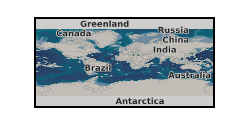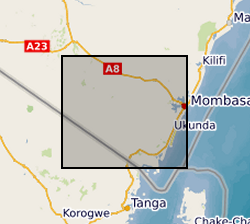Hydrogeology
Type of resources
Available actions
Topics
Keywords
Contact for the resource
Provided by
Years
Formats
Representation types
Update frequencies
Service types
Scale
-

Index to Statutory Borehole Notifications of intent to drill a borehole for water supply.
-

Collection of raw hydrogeological data obtained during various projects in different countries.
-

Collection of data from the PhD Thesis 'Development of coupled processes numerical models of tracer, colloid and radionuclide tranpsort in field migration experiments', submitted as part of the RATE HydroFrame WP5. This collection of data includes blank model files in COMSOL Multiphysics and PHREEQC, as described in the PhD thesis. Also included in this data package are different spreadsheets with model outputs from the model files that describe the transport of conservative tracers, colloids and radionuclides in experiments carried out at the Grimsel Test Site, Switzerland as part of the Colloid Radionuclide and Retardation (CRR) and the Colloid Formation and Migration (CFM) experiments (www.grimsel.com).
-

Card index with abstraction data for licensed water wells in England and Wales 1948-1963.
-

Collection of hydrogeological reports and maps for various different overseas countries derived from various sources.
-

To determine the p-t stability of hydrous phases in ultramafic compositions in subduction zones, and the conditions at which h2o is released from subducting slabs in dehydration reactions; to obtain thermodynamic data for hydrous phases through phase-equilibrium experiments and in situ volume measurements; and to constrain the equation of state of h2o at high pressures. Reversed phase-equilibrium experiments will be conducted on reactions in the systems mgo-sio2-h2o and mgo-al2o3-sio2-h2o; thermodynamic data for hydrous phases wil be extracted from p-t postions of solid-solid reactions; positions of dehydration reactions will constrain the equation of state of h2o; volumes of phases will be measured in situ using synchrotron radiation
-

Data on groundwater pollution for Bishket, Kyrghyzstan.
-

Spatial data for Bishket urban pollution project data on groundwater pollution
-

Results of Electrical Resistivity Tomography (ERT) conducted in Kwale County, Kenya December 2015 and June 2016 by University of Nairobi and Water Resources Management Authority as part of the Gro for GooD project (https://upgro.org/consortium/gro-for-good/) to characterize the aquifers in the study area. There were eight transects of length 1.2 to 6km, running W-E and NNE-SSW parallel to coastline. ERT data was analysed using RES2D inversion software. Gro for GooD - Groundwater Risk Management for Growth and Development
-

This map layer shows the distribution of superficial deposits, as mapped at 1:250 000 scale, which are considered to have the potential to store and transmit significant amounts of groundwater. The areas defined are based upon a sub-set of superficial deposits as mapped by GSNI at 1:250 000 scale where the following mapped deposits are considered to have potentially significant permeability and storage properties: glacial sands and gravels, blown sand, raised beach deposits and alluvium. A regional, detailed assessment of the individual deposits in terms of their aquifer potential (aerial extent, thickness, saturated depth etc.) has not yet been undertaken. Hence formal classification of each deposit as an aquifer area is not possible at present. In some cases limited aerial extent or minimal thickness may result in the mapped geological deposit not being considered as an aquifer. Due to natural geological variability and data availability, this map cannot and is not intended to represent actual conditions on a site-specific scale. For site specific investigations more detailed geological and hydrogeological information is available from GSNI. Advice on groundwater management and protection matters is available from the GSNI hydrogeologist or by contacting the Groundwater Team at NIEA. Further information on the hydrogeology of Northern Ireland is available in Hydrogeology of Northern Ireland, Robins N S (1997) and Hydrogeological Map of Northern Ireland, BGS 1994 both of these are available from the BGS bookshop or from the GSNI office (note: the aquifer classification used on the 1994 hydrogeological published map differs from the classification shown on the GeoIndex layer). NOTE: When considering the distribution of aquifers within a certain area, reference should also be made to the bedrock aquifer layer, available on this website.
 NERC Data Catalogue Service
NERC Data Catalogue Service